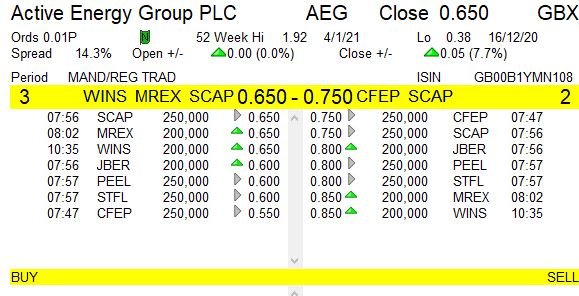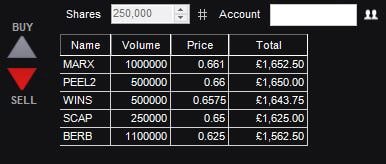Many traders don’t understand Normal Market Size. This can lead to difficulty in getting out of stocks leading to painful losses. Furthermore, there are ways that you can use NMS to your advantage against other traders.
This article explains all about Normal Market Size and how to use it effectively.
What is Normal Market Size?
Normal Market Size (NMS) is the minimum number of shares that market makers must deal in a transaction for that particular stock at a specific price. Normal Market Size means that there is a guaranteed bid and offer in the stock to keep prices and trades flowing.
Understanding Normal Market Size
Normal Market Size (or Exchange Market Size – EMS – as it is also known as on the London Stock Exchange in the UK) protects investors from not being able to deal in the stock. However, it is crucial to understand that the NMS rules only apply for telephone dealing.
For example, if you call your broker and ask them to deal in the stock, you can be guaranteed a minimum fill in a certain size and price at least.
But if you request a quoted price to buy or sell online then the market makers are not obliged to honour any price or size of transactions. This means that no minimum price or size can be guaranteed when you request a market maker quote through your online broker.
How Normal Market Size works
Normal Market Size works by providing a guaranteed buy and sell price and size to buyers and sellers in the market. This facilitates liquidity and ensures a flow of trading because buyers and sellers can rely on being able to enter and exit at a minimum size and price.
Imagine buying a stock and not knowing if there would be a market maker offering you a price should you want to sell? NMS prevents that from happening.
What is the size of a Normal Market Size
The size of NMS varies from stock to stock. In larger more liquid stocks the NMS naturally increases.
In many small stocks the NMS may only be a few hundred pounds’ worth of stock. You should always be careful of the NMS because taking a larger position can mean that you find it difficult to exit the stock in a hurry.
What does Normal Market Size mean in trading and buying stocks
Always check NMS when looking at stocks – especially thinly traded and illiquid small cap stocks.
For example, if you’re buying a position of £20,000 but the NMS is only £2,000, then that means you may struggle to exit your position should you need to do so in a hurry.
This illiquidity works both ways of course, and so it can be seen as an opportunity as well as a risk.
If everyone suddenly wants to buy stock this will drive the price upwards. But if everyone was in a hurry to sell this would force the price downwards.
Using Normal Market Size to force market makers to deal
Sometimes when using a market maker’s quote there won’t be any quote to do your specific transaction. But you can call up your broker and ask them to buy or sell directly to that specific market maker. By using this technique it forces market makers to deal when they may be bluffing online.
For example, many traders think that if on Level 2 there are several market makers on the bid then this means that the stock is well supported.
What these traders don’t realise is that market makers will often position themselves on Level 2 to entice traders to take a position.
One market maker may be pretending to bid, yet on the RSP the market maker is actively a seller of the stock.
Market makers know that almost nobody deals over the phone – and so if you want to force them to deal then you can direct your orders via the phone to them.
Example of market maker bluffing
Here is an example of a market maker bluff. Below is a Level 2 screen from a stock called Active Energy Group. We can see on the left of the screen the market makers are lining up on the bid (learn how to read a Level 2 screen here).

Look specifically at Peel Hunt, or PEEL on the screen. We can see that this market maker isn’t bidding competitively for stock and is on the book at 0.60p.
Now look at the RSP screen from IG Markets.

We can see from this screenshot that PEEL are bidding aggressively with a firm bid at 0.66p – a full 10% higher than their online bid on Level 2.
Sometimes market makers will feign disinterest and other times they will pretend to be bidders whilst being the most competitive on the offer on the RSP.
The reason is because they can fool most traders who don’t know about the RSP and how to check for firm prices rather than rely on Level 2.
When checking for online quotes in a particular security, always check both the bid and offer as well as Level 2 and NMS.


